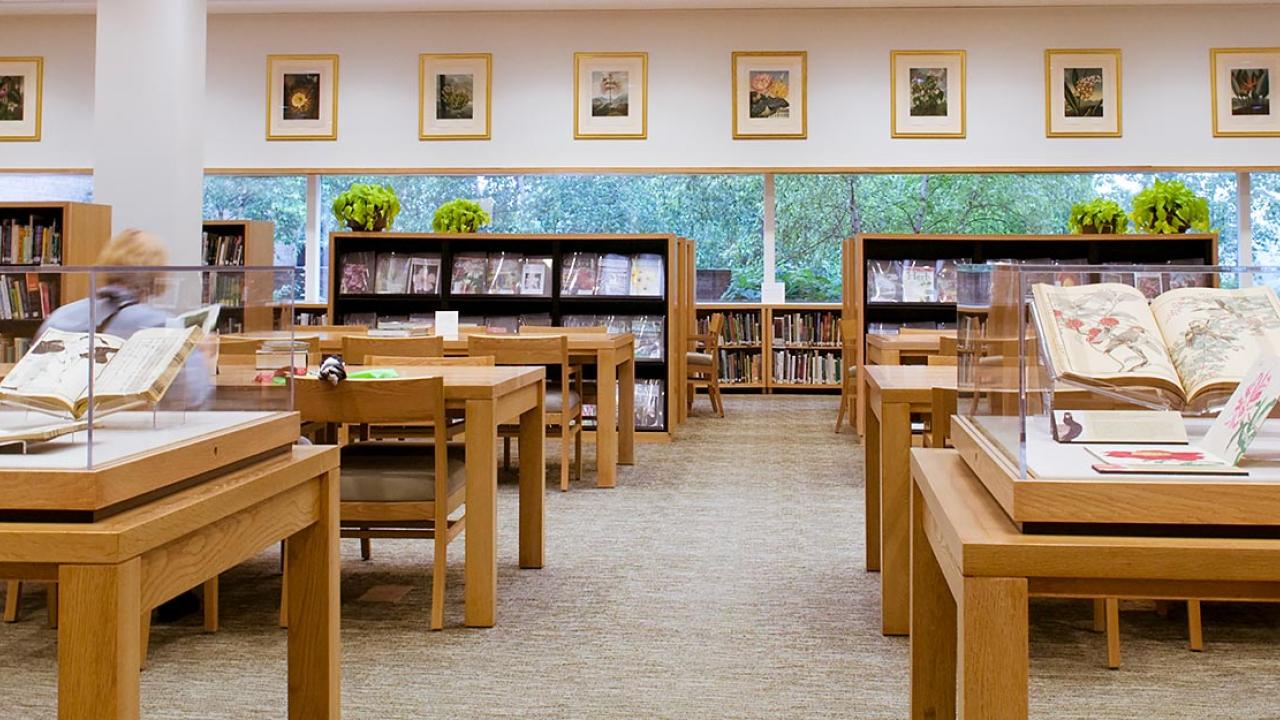

The Language of Flowers
These days, we text hearts. But in Victorian times, flowers acted as the instant messaging and emojis of the day.
In nineteenth-century Europe (and eventually in America), communication by flower was all the rage. A language of flowers emerged. Books appeared that set the standard for flower meanings and guided the sender and the recipient in their floral dialogue. Victorians turned the trend into an art form; a properly arranged bouquet could convey quite a complex message.

Naturally, books on the subject often had lavishly decorated or illustrated covers.
An amazing collection of books about the subject, including many entitled The Language of Flowers, was donated to the Lenhardt Library. The gift of James Moretz, the retired director of the American Floral Art School in Chicago, the collection includes more than 400 volumes from his extensive personal library on floral design. Moretz taught the floral arts for 45 years, traveled the world in pursuit of the history and knowledge of flowers, and authored several books on the topic. His donation gives the Chicago Botanic Garden’s Lenhardt Library one of the Midwest’s best collections of literature on the language of flowers.
As even these few photos show, there are books filled with intricate illustrations, books specific to one flower, handpainted books, pocket-sized books, and dictionaries. The oldest volume dates to 1810. Two are covered in pink paper—seldom seen 200 years ago, but quite subject-appropriate. Many books are charmingly small—the better to fit, it was thought, in a woman’s hands.

A type of communication without words, the language of flowers needed a standardized dictionary in order to be properly understood.

Carnations held several meanings: a solid color said yes, a striped flower said no, red meant admiration, while yellow meant disappointment.
The language of flowers translated well: there are books in French, Spanish, Italian, German, Dutch, Japanese…and English. Some 240 of the volumes are quite rare—those are part of the library’s Rare Book Collection.
Librarians aren’t often at a loss for words, yet when I asked Lenhardt Library director Leora Siegel about the importance of the donation, she paused for a very long moment before responding. Clearly, her answer would have weight.
“It is the single most outstanding donation in my tenure as director,” she replied.

